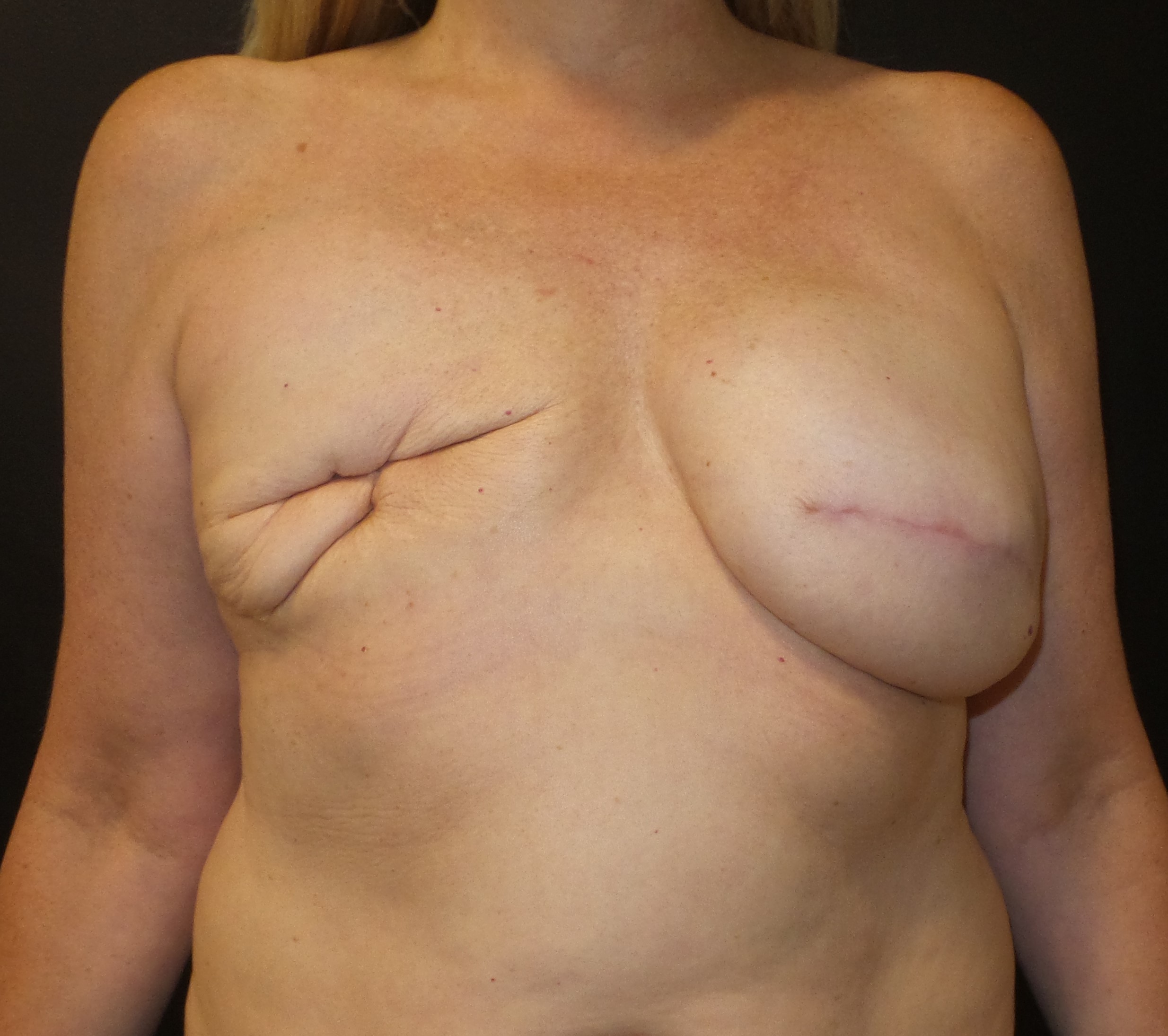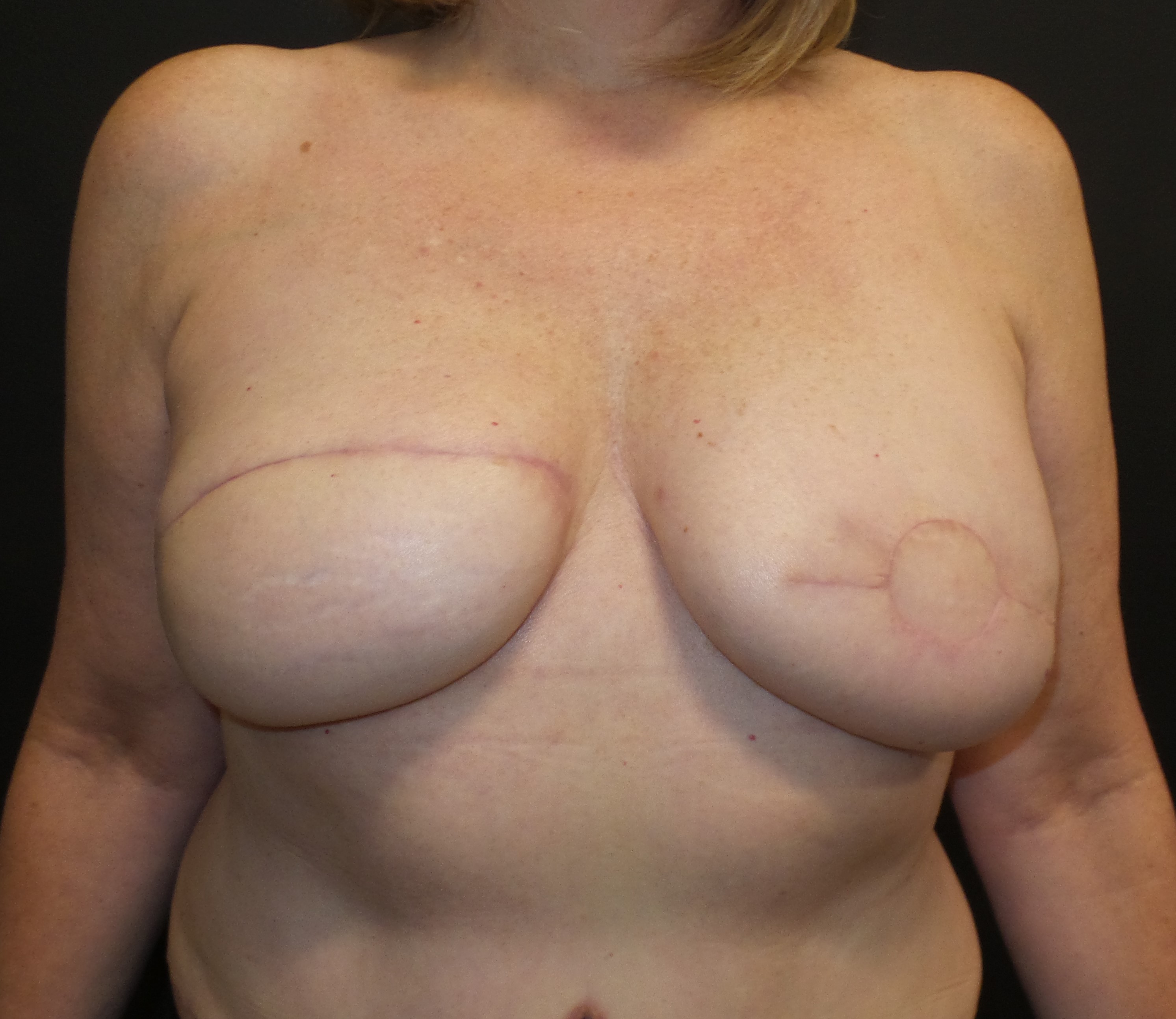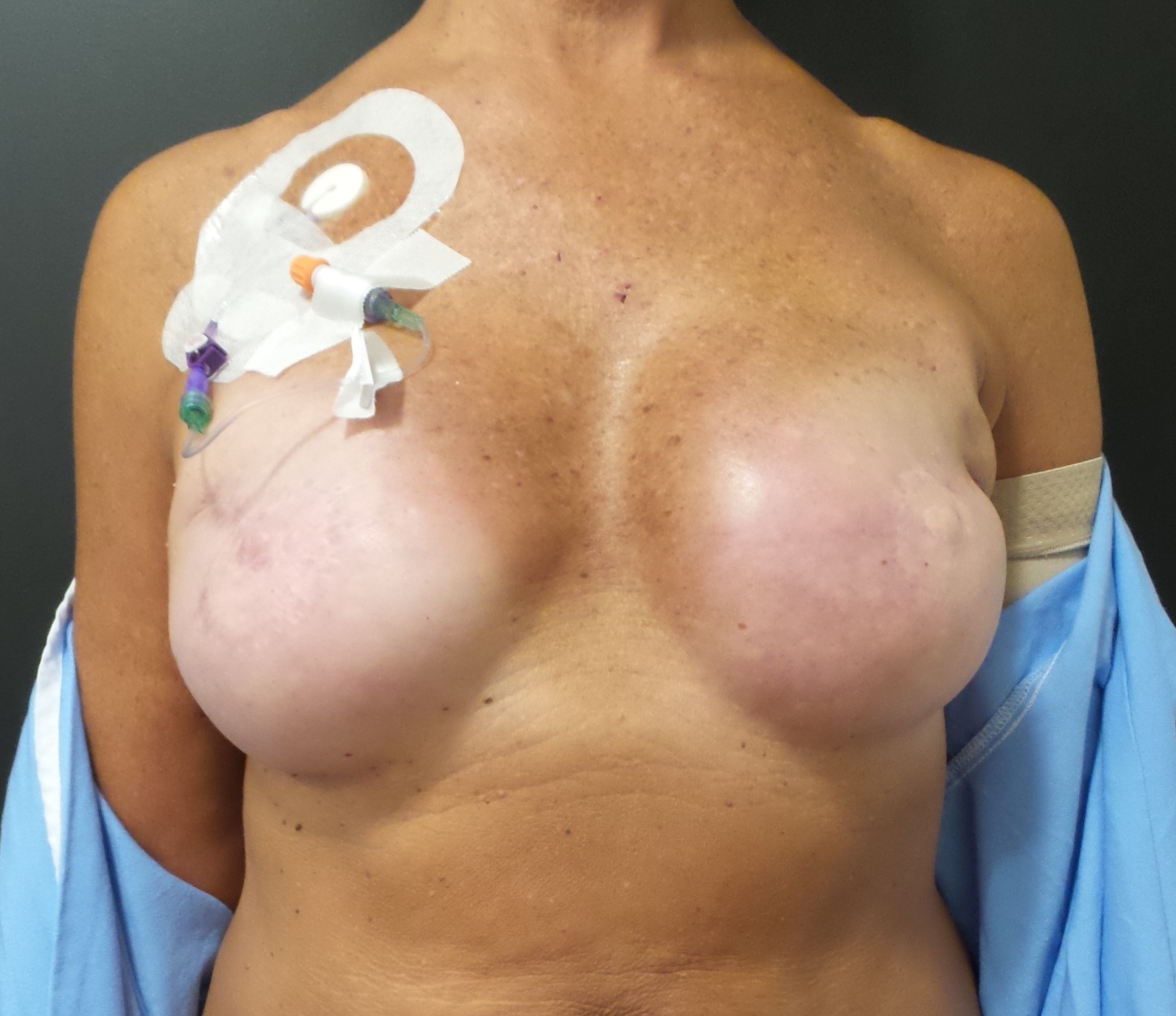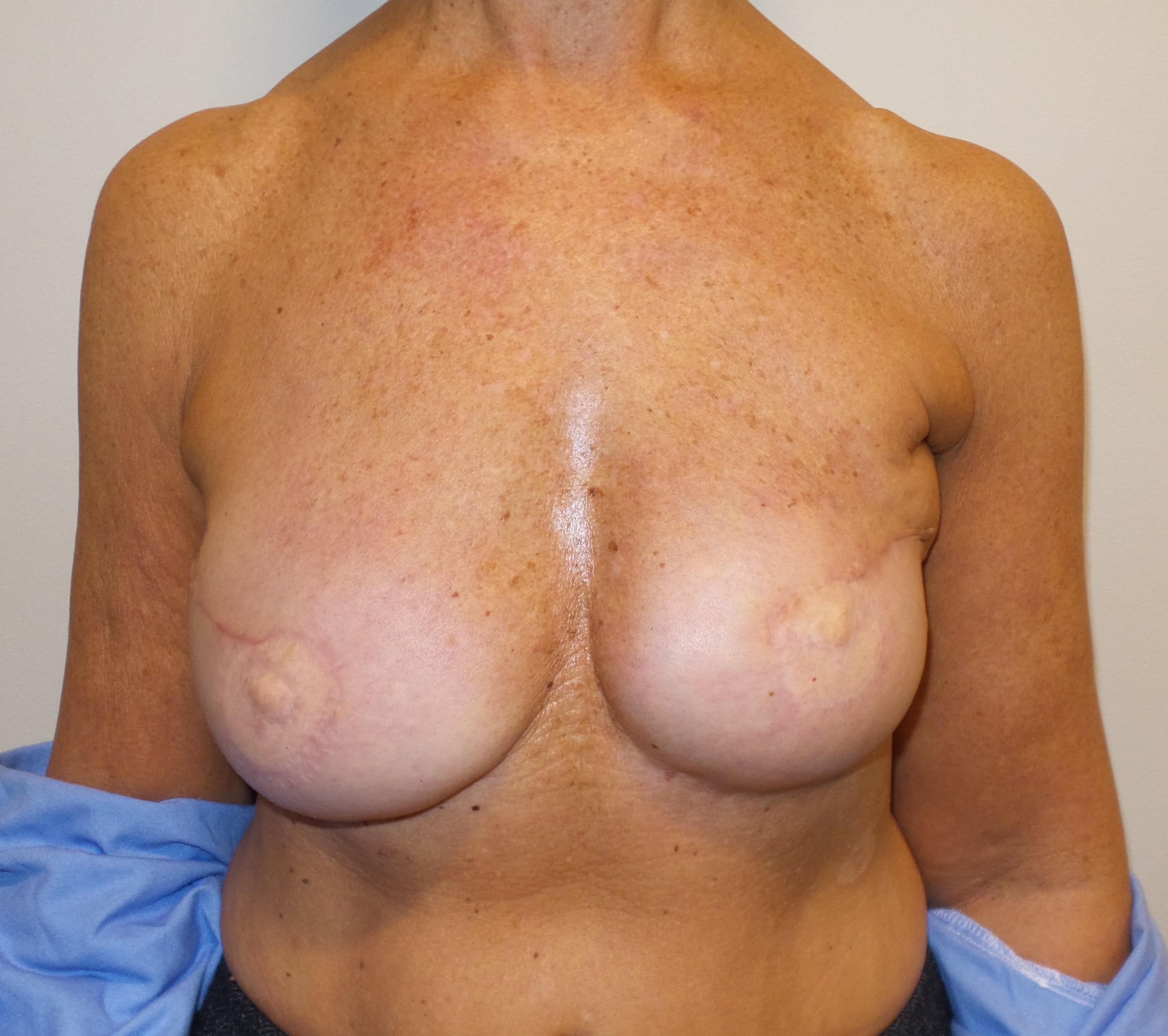Breast Reconstruction with DIEP Flap after Implant Failure
![DIEP Flap in Connecticut for Implant Failure Dr. Jandali]() DIEP Flap after Implant Breast Reconstruction
DIEP Flap after Implant Breast Reconstruction
The most common method of breast reconstruction is with tissue expanders and implants. The main reason for this is that implant based reconstruction is a shorter surgery and recovery. In addition, some patients don't have an adequate abdomen to use their own tissue for reconstruction. Further, many plastic surgeons haven't been trained in and therefore don't offer free flap breast reconstruction. However, there are situations where using a patient's own tissue may be necessary when there are problems with implant based reconstructions. DIEP flap reconstruction is a cutting edge method involving microsurgery that uses the lower abdominal tissue without taking any of the muscle.
Problems with Implants after Breast Reconstruction
Implants are foreign bodies and therefore have distinct problems inherent to them after breast reconstruction.
Infection of Breast Implants after Reconstruction
Breast implants after reconstruction can become infected, and the reported risk in large studies is about 4-5% of women who have an implant reconstruction. So about 1 in 20 or 25 women with a tissue expander or an implant will develop an infection. When that occurs, antibiotics can fight the infection about half the time. However, sometimes the tissue expander or implant needs to be removed in order to fully eradicate the infection. The skin then contracts and becomes fibrotic, making it very difficult to perform another implant reconstruction. These situations are good cases to consider using a patient's own tissue for reconstruction.
Radiation of Breast Implants after Mastectomy Reconstruction
Some patients need radiation to their breast after mastectomy and implant reconstruction. Radiation can cause hardening of the implant known as capsular contracture. It can also cause chronic pain when the capsular contracture is severe. Patients who need to undergo radiation after mastectomy are perfect candidates for DIEP flap breast reconstruction because it allows the tissue expander or implant to be permanently removed.
Thin Skin and Rippling after Mastectomy
Other patients never develop an infection or capsular contracture, but just have very thin skin and tissues after the mastectomy. The edges of the breast implant can be seen, as well as rippling of the implant through the skin. Although the skin on the breast may be thin after the mastectomy, these patients often have an adequate abdomen which is perfect for replacing the implant with the abdominal fat with a DIEP flap.
How Long Do Breast Implants Last after Mastectomy?
Breast implants don't last forever and eventually the shell wears down and the silicone gel slowly leaks out. This is not harmful, but does mean that another surgery is needed to replace the implant. On average, implants last anywhere from 10-15 years. A DIEP flap breast reconstruction is an option for patients who don't want to continue to have implants and get them exchanged every 10-15 years when they rupture.
Contact Us for DIEP Flap Breast Reconstruction in Connecticut
If you are interested in DIEP flap breast reconstruction in Connecticut, come visit our plastic surgery office in Fairfield County, Connecticut. Call 203-374-0310 to set up a consultation with Board Certified plastic surgeon Dr. Shareef Jandali. We look forward to seeing you.

 DIEP Flap after Implant Breast Reconstruction
DIEP Flap after Implant Breast Reconstruction




